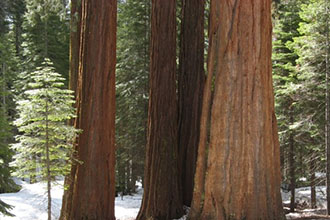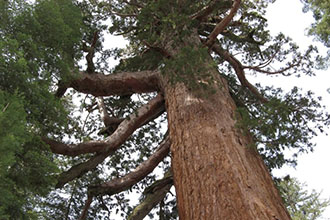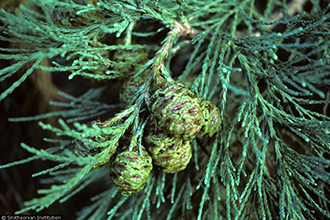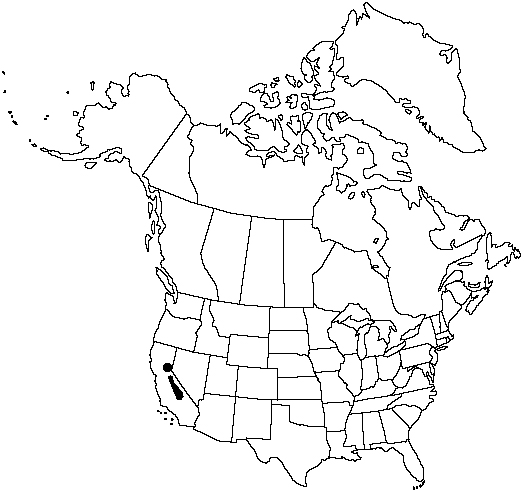Taxonomy: Kingdom - Plantae (plants). Subkingdom - Tracheobionta (vascular plants). Superdivision - Spermatophyta (seed plants). Division - Coniferophyta (conifers). Class - Pinopsida. Order - Pinales. Family - Cupressaceae (cypress family). Genus - Sequoiadendron J. Buchholz (giant sequoia). P Species - Sequoiadendron giganteum (Lindl.) J. Buchholz (giant sequoia).
Ecology: Since its discovery in the mid-nineteenth century, giant sequoia, also called sequoia, bigtree, and Sierra redwood, has been noted for its enormous size and age, and its rugged, awe-inspiring beauty...One tree species has a greater diameter than giant sequoia, three grow taller, and one lives longer. In terms of volume, however, the giant sequoia is undisputedly the world's largest tree. The most massive specimen, the General Sherman tree, located in Sequoia National Park. The greatest known age of a giant sequoia is 3,200 years, determined from a stump count of rings.
The natural range of giant sequoia is restricted to about 75 groves scattered over a 420-km belt, nowhere more than about 24 km wide, extending along the west slope of the Sierra Nevada in central California. Giant sequoia groves lie wholly within the Sierra Nevada Mixed Conifer type-SAF (Society of American Foresters) forest cover type 243. A grove is distinguished from similar mesic habitats in this type only by the presence of giant sequoia itself: no other species is restricted to the groves. Nowhere does giant sequoia grow in a pure stand, although in a few small areas it approaches this condition.



